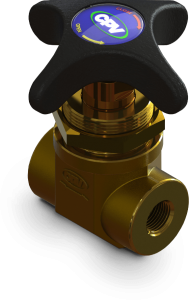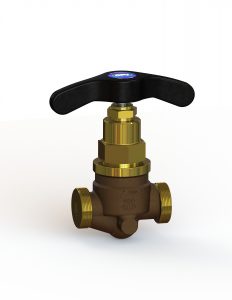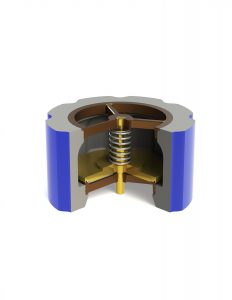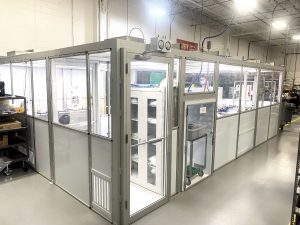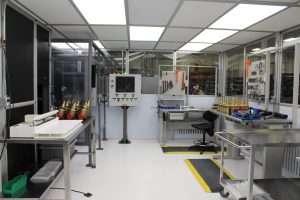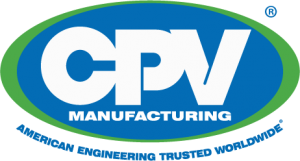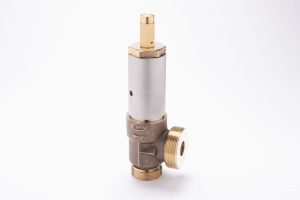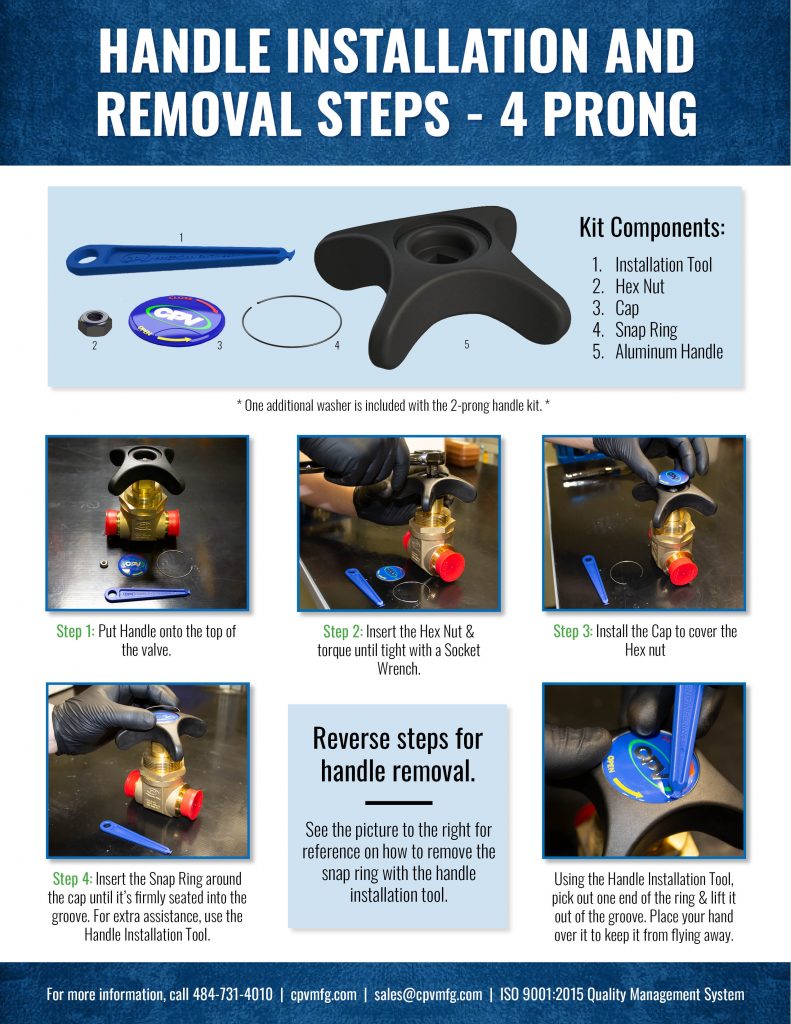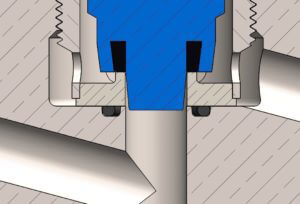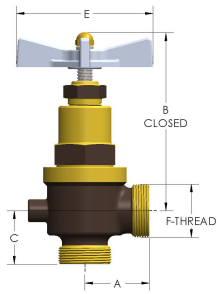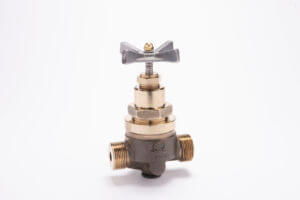Master Valves: The Importance of Ergonomics in the Manufacturing Industry
Manually operated valves, otherwise called master or control valves, are a critical component for refineries, industrial gas production facilities and distribution centers. These valves control the movement of gas to fill industrial gas cylinders, or that traverse pipes for processing.
Due to their ubiquitous presence, these master valves must offer operators reliability, durability, cost effectiveness and one other characteristic not always factored into the design— ease of use
The original equipment manufacturers (OEMs) that fabricate or construct the manifolds, fill plants, panels and high-pressure piping systems need a reliable partner for these integral components.
CPV Manufacturing is a world-renowned industrial valve manufacturer with a reputation built on our precision craftsmanship of robust, high-pressure solutions engineered to withstand the most demanding conditions.
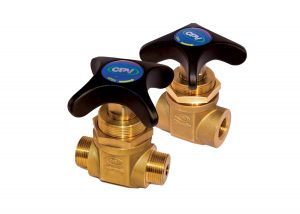
Safety First
The Compressed Gas Association and regulatory agencies like OSHA offer information about the hazards of compressed gas cylinders of all types, dangerous due to the high pressurization of their contents. Gaseous oxygen packaged in compressed gas cylinders serves multiple purposes and industries around the globe. These include the recreational, medical, power, chemical processing and metal refining industries, among others.
This particular compressed gas also requires unique safety measures or extra requirements in regard to medical or industrial oxygen cylinder filling. This includes having the valve complete and pass an oxygen surge pressure test, which evaluates the ignition sensitivity of the valve.
In addition to the hazards associated with a highly compressed gas, oxygen cylinders present the risk of fire. Any valve designed for use in this type of application must obtain an oxygen-safe approval at a specific operating pressure, without showing any indication of ignition failure.
Dependability
Operators expect this type of valve to operate flawlessly for thousands of cycles, and ideally, do so without maintenance. CPV master valves offer worry-free operations for countless hours of smooth, accurate, efficient, and consistent filling of valves and cylinders.
Ergonomics or Ease of Use
During many years of operation, multiple industries have relied on brass hand valves, although not without some difficulties for the operator. Operator fatigue or other ergonomic repercussions stem from a few common characteristics associated with these valves. Namely, most require high torque to open and close, repeated numerous times over the course of a single shift.
Plant operators and operations can benefit from a valve with an ergonomically designed handle. The GSB master valve from CPV requires low torque to open and close while still providing a bubble-tight seal.
Consistent Sealing
While constructing a more ergonomically friendly master valve, it is critical to ensure leak rates are controlled. In addition to ergonomics, leak rates both internally and externally have historically created issues with master valves.
Any components such as seals which can degrade over time, can cause parts failure. Leaky or degraded seals can force a company to replace these master valves as often as every three to six months. Despite their generally economical price point, frequent replacement of even an inexpensive part can unnecessarily strain a capital expense budget, not to mention the added maintenance impact and associated downtime for replacement.
The Answer
The CPV GSB Valve answers all critical performance factors for a master valve that is reliable, dependable, durable, safe and ergonomically designed for ease of use.
Highest Pressure Rating in the Industry
The CPV GSB Valve is rated for 6,000 PSIG (414 bar) for Oxygen Service for commercial applications worldwide. It has passed oxygen pressure surge testing with 100% oxygen gas, approved by WHA International, Inc. for ISO 10297 and ISO 7291. In this case, the master GSB valve was tested up to 7,200 PSIG (496 bar) in oxygen, with no sign of failure or leaks.
CPV Manufacturing’s GSB master valve is the only master or control valve available that meets these stringent requirements. OEMs can rely on the GSB master valve for safety and reliability for high-pressure cylinder filling and processing projects.
Leak Prevention
CPV prevents leaks by offering the GSB valve fitted with our O-Ring Face-Seal, or O-SEAL separable union connections. This valve is rated for 7,800 PSIG (538 bar) service in inert gas applications, including acetylene, helium, hydrogen, nitrogen, mixed gases and others.
Ergonomic Design
The larger, four-prong aluminum handle has an updated design to make it even easier to operate. Its performance was tested internally and externally with several customers.
In just four turns, the master valve can open or close and with a lower torque than the competition. Further, there are no leaks for a bubble-tight seal for the life cycle of the valve. While other valves become more difficult to turn after multiple cycles, the master valve from CPV Manufacturing remains easy to turn supplying trouble-free operation for thousands of cycles.
This is a considerable benefit considering the number of valves present on a single panel. There can be anywhere from a few to more than a dozen valves on an individual control panel.
Thorough Testing
Many manufacturers order sufficient quantities to maintain continuous production without waiting for replacement parts. Each GSB Valve from CPV Manufacturing is fully tested and vacuum sealed to preserve optimal product integrity and cleanliness.
This GSB master valve best serves critical applications and requirements for gas cylinder fill plants, manifolds, panels, and tube trailers. The robust design is leak-free and supplies the same reliable sealing mechanisms common to other CPV valves used in the high-pressure filling industry for the past 80 years.
GSB features and benefits:
- Oxygen safe – Approved per ISO 10297 and ISO 7291 for 6000 PSIG in Oxygen Service
- Highest flow coefficient in the industry
- Ergonomically designed handle
- Low torque operation even at full pressure
- Four turns
- Ease of use over thousands of cycles
- Low torque operation
- Good flow characteristics
- 100% Oxygen Cleaned & Packaged per CGA G-4.1 and ASTM G93 standards
- Soft-seated sealing for bubble tight, leak free operation
The CPV GSB master valve is interchangeable with existing master valves. OEMs and operators find it easy to install to replace under-performing, lower quality valves with a lower pressure rating.
For more information on available sizes or custom requirements, contact CPV Manufacturing, for master valves or fittings that supply the quality, durability, safety, and leak-proof integrity that allow your operations to run smoothly.

